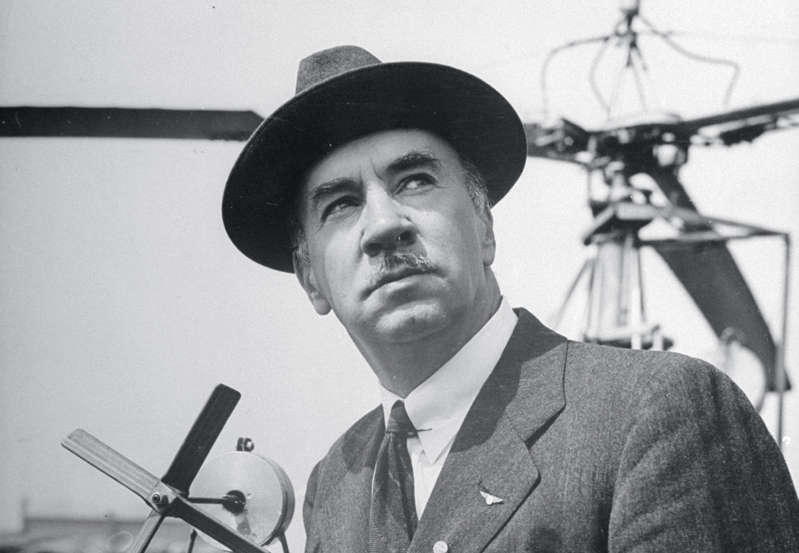
Attention: a riddle. With a mustache like Hitler, but good; in a hat, but not Indiana Jones; an emigrant, but not Brodsky. We are talking about aircraft designer Igor Sikorsky – the father of the helicopter and other excellent flying pieces!
Sikorsky's surname has always been in the top ten of the charts of surnames that the Soviet regime hated. After all, this Kiev nugget, having left the Russian Empire, did not follow the example of thousands of other emigrants of the first wave, and instead of sweeping a dusty Berlin cafe or dashingly driving a taxi through the streets of Paris for the rest of the days, he became one of the most successful aircraft designers in the world.
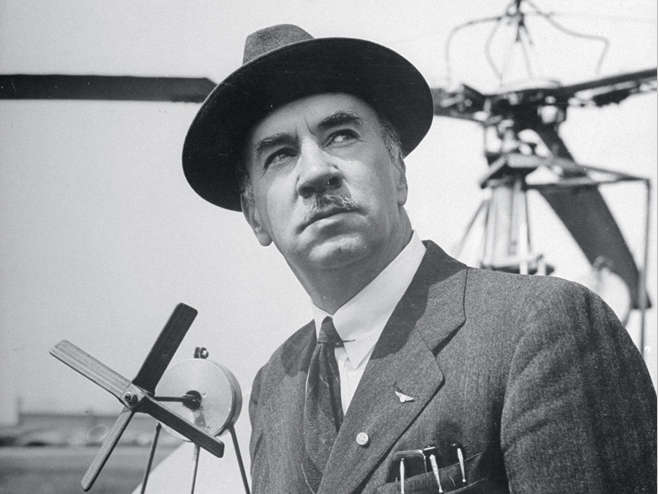
It got to the point of absurdity: children's books cited not the world's first four-engine Russian Knight aircraft, built by Igor Sikorsky at the age of 24, as an example of the achievements of Russian aviation, but the Svyatogor bomber of non-Nikorsky authorship that never took off.
While the censors, yielding to the call “Down with sikorshchin!”, Diligently crossed out the designer's name from all available documents and textbooks, Sikorsky himself received awards for his contribution to the development of aviation from the hands of Eisenhower, corresponded with Sinatra and condescendingly patted astronaut Neil Armstrong on the shoulder. But let's not get ahead of ourselves. Better run back to the childhood of the designer.
Boy in the cradle
Igor's father, Ivan Alekseevich Sikorsky, was a plow psychiatrist. Coming from the family of a provincial Orthodox priest, he made a dizzying career in medicine, the peak of which was the title of professor at the Department of Mental and Nervous Diseases at Kiev University.
The popularity of Sikorsky the doctor was so great that when on May 25, 1889, his fifth and last child, son Igor, was born, a good tradition had already developed in the family, according to which the godfather of each newborn was a representative of the royal dynasty. Igor's godparents were Grand Duke Peter Nikolaevich (cousin of Emperor Alexander III) and his mother, Grand Duchess Alexandra Petrovna.
Igor's childhood was well-fed, contented and calm. He was the favorite of his mother, a highly educated woman. It was she who told little Igor about the homo universalis Leonardo da Vinci who once lived in Italy. Of all the inventions of the Italian, the future designer was most interested in the drawing of an aircraft – a helicopter.
The mother's story, coupled with the adventure novels of Jules Verne, had such a powerful effect on the child's fragile psyche that he soon had an amazing dream. It is as if he is standing inside an elongated room with walnut doors and small windows, on the walls of which there are beautiful lamps that illuminate the room with a bluish light. The boy felt a slight vibration under his feet, it dawned on him: the room is in the air!
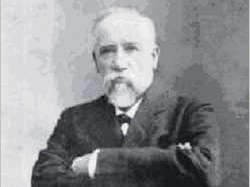
Famous psychiatrist Ivan Alekseevich Sikorsky
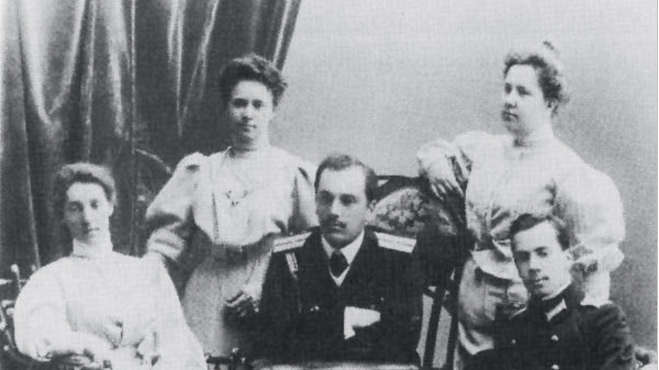
Waking up, the younger Sikorsky, instead of crossing himself and spitting, went into the courtyard and, with the help of a servant, pulled several ropes between two powerful poplars, to which he hung a wicker cradle.
While schoolchildren of the same age threw their briefcases at each other with excitement, Igor sat pensively for hours in a cradle that hung five meters above the ground. So he accustomed himself to altitude, so as not to get frightened when the time came to test his first flying machine.
The first successes of the truant
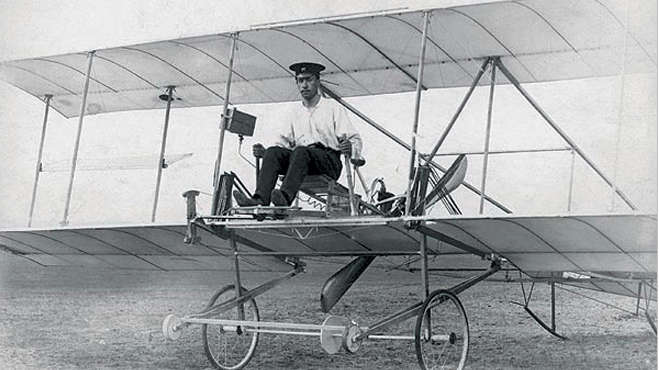
After studying following the example of his older brother Sergei in the Naval Cadet Corps for three years, Igor left the walls of the institution with the comment: “Not mine.” He was prevented from calmly mastering the naval sciences by the reports that appeared in the newspapers about the flights of the Wright brothers. In 1906, 18-year-old Igor, with his father's blessing, went to the Duvigno de Lanno technical school in Paris.
A shy young man with a skinny elongated face with a carefully grown mustache did not attract the attention of Parisian beauties, and therefore could fully devote his time to a technical school. After studying for six months, Igor returned to Russia to bury his mother and enter the Kiev Polytechnic Institute.
“Vityaz” and “Muromets”
Studying was easy for Igor, even though he was actively skipping, whiling away the time in an impromptu home workshop. The very first “hack” Igor – a steam motorcycle – made him a legend in the ranks of fellow practitioners and teachers. But the coveted helicopter still didn't work out.
Igor gathered a family council. He intends to return to Paris, which is currently the aviation center of the world, and for this he needs money. The family got excited. Older brother Sergei doubted that a 20-year-old boy with a lot of money in cheerful Paris was a good idea. And in general, Sergei does not believe in helicopters: nature itself has proven that a creature heavier than 10 kilograms cannot rise into the air, a jumping ostrich is living proof of this.
But Igor persisted. In the end, money from the family budget was allocated, and after a few weeks Igor introduced himself to the aviation pioneer Ferdinand Ferber, who immediately declared to the enthusiastic Sikorsky that it was easy to invent a flying machine, harder to build, and almost impossible to make it fly.
Indeed, after six months of construction and several months of testing the helicopter, which was able to lift its own weight, but not the pilot, Sikorsky returned to Kiev with two motors of 25 and 15 horsepower and the idea of building an airplane. And so that the propellers invented for the helicopter would not be wasted, Igor fixed them on a snowmobile of his own design, the demonstration of which on the snowy wasteland in front of the officers of the General Staff was widely covered by the Kiev press. Sikorsky's fame grew stronger.
The year 1913 was surprisingly happy for the young designer. And not only because he finally left the institute. The construction of the world's first aircraft with four engines, the Russian Knight, was completed. It was built by Sikorsky no longer in Kiev, but at the Russian-Baltic Carriage Works, the head of the aviation department of which he was appointed.
A few months after the first flight of the Vityaz, a more advanced development was presented to the general public – the giant Ilya Muromets at that time. On February 12, 1914, Muromets set its first world record for the number of passengers taken on board. Sixteen people, and even the airfield dog Shkalik! The cargo was 1290 kilograms. A whole bunch of ostriches!
For all this fuss, the designer forgot about one trifle: he never received an engineering degree. Here admirers of Sikorsky's talent jumped in. They wrote a collective letter about the achievements of their idol to the Kiev Polytechnic Institute with a request to “award” Igor a diploma. A couple of months later, Sikorsky was awarded the Order of St. Vladimir IV degree “for his merits in the military aviation”, bestowing the nobility.
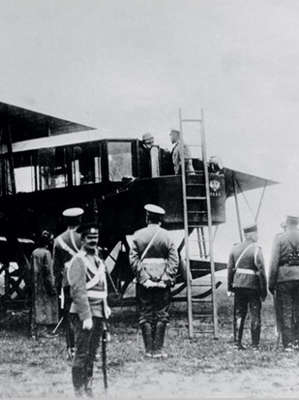
photo: Nicholas II with a 24-year-old designer at “Muromets”
The recognition inspired Igor to new exploits. He decided to set the world record for flight distance on the Muromets. Sikorsky and three of his associates planned to overcome the St. Petersburg – Odessa route in a day, but in the end they flew only to Kiev.
The journey went briskly: the gas line burst, gasoline began to whip at the engine running at full speed, a three-meter flame engulfed part of the wing. Fortunately, the “Muromts” had access to the engines in flight, so one of the mechanics rushed to put out the fire. After a couple of seconds, the mechanic caught fire himself, and the second mechanic had to put out the partner first, and then they jointly coped with the fire, knocking him down with their jackets.
Flying over Kiev, Sikorsky dropped over his stepfather's house and waved his wing. Then he sent the car to the airfield, where representatives of the Kiev Aeronautics Society were already guarding the designer, pilot and mechanics. After stormy greetings, someone casually mentioned the news from abroad: Archduke Franz Ferdinand had been killed in Sarajevo. However, everyone was too absorbed in the flight to think about the consequences of this event.
Forced escape
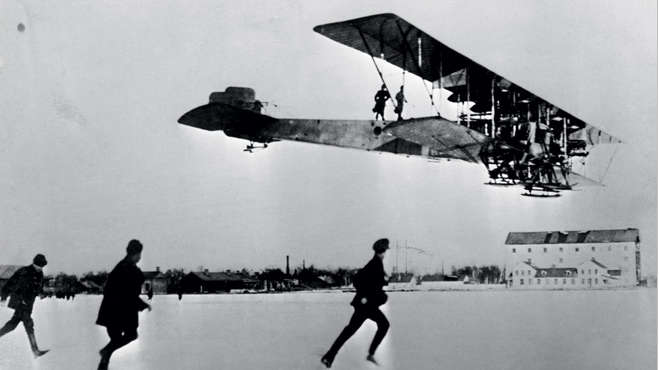
During the First World War, Sikorsky was responsible for the supply of heavy bombers “Muromets” for the army. In total, a little more than eighty pieces were produced. Meanwhile, the situation inside the country was heating up. In the young Sikorsky family, things were also not good. In 1916, the designer married the spoiled and capricious, but very pretty Olga Sinkevich, and even managed to acquire a daughter, Tatyana.
But soon after the wedding, another one was added to the negative characteristics of the wife: Olga became an ardent communist. Sikorsky, the royal favorite and godson of the great dukes, did not match her new image. After registering a divorce, Sikorsky moved from a house near St. Petersburg, which he built for his family, to an apartment.
On a cold January night in 1919, a loyal designer from the Russian-Baltic plant knocked on the door of this very apartment. He said that during the day Sikorsky was interested in suspicious muzzles in leather jackets. Without delaying even an hour, the designer gathered his belongings and moved to a change house with a potbelly stove, next to the airfield. The next morning, he began preparing the necessary papers for the departure. A month later, Sikorsky departed for Paris. He will not see Russia again.
In emigration, the designer took a couple of hundred British pounds, a letter of recommendation from the head of the French military mission in Russia and endless faith in his work. But Europe was already full of Russian emigrants, and even Sikorsky's fame as a designer was depreciating against the backdrop of the rapidly collapsing aviation industry.
I didn't want to sit in Paris without work, to return to my homeland, in the clutches of the commissars – all the more so. There remained a country of great opportunities and active people on the other side of the ocean. In the spring of 1919, Sikorsky set foot on the American coast.
New York, New York!
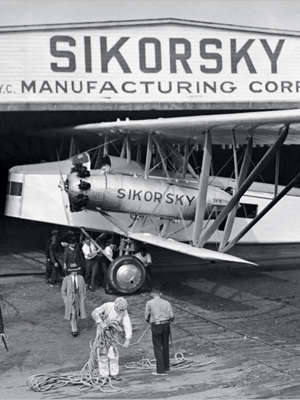
Sikorsky was a mediocre master of the language, and at first he was helped by the Kiev immigrants, of whom there were many in New York. But he still could not get a job in his specialty. For three months, the designer wandered around the aviation offices, trying to explain in broken English to entrepreneurs with a glass eye what wonderful airplanes he can make.
Entrepreneurs only indifferently lit a cigarette: America was swarming with unemployed aircraft designers and pilots who had been retired after the end of the war. Igor changed a cheap hotel to a very cheap one, cut his daily expenses to ascetic eighty cents, eating mostly beans and coffee. It's time to hate fate and get drunk! But Sikorsky, who at the first acquaintance seemed to be gentle and non-conflicting person, actually had a strong character of a fighter and refused to admit defeat.
One of the emigrant acquaintances took pity on the haggard Igor and recommended him for the position of teacher of mathematics at an evening school for Russian workers on the East Side. Gradually, the lessons of mathematics turned into the basics of aviation. Sikorsky enthusiastically broadcast from the department about heavy aircraft of the future, capable of lifting forty, or even fifty people. So the designer had followers who were ready to build his planes for free. In addition, he met the pretty school teacher Elizaveta Semeon, the daughter of a Russian officer.
Life was getting better. True, it took the designer about a year to build the first “American” aircraft, and this year was very intense. The hastily founded Sikorsky Aeroengineering Corporation was located in a windswept chicken coop on Long Island. There was a constant lack of money, even the impressive sum of 5 thousand dollars (about 80 thousand modern dollars) donated by the composer Sergei Rachmaninov did not save.
The first tests of the S-29-A were unsuccessful: the plane fell to the ground like a stone, but, fortunately, no one was seriously injured.
But when the plane was able to fly, orders poured in – for example, the transportation of a piano for the president's wife, Mrs. Hoover, and the delivery of prohibited alcohol. The designer had some money, and he was able to marry Elizabeth. This marriage turned out to be extremely successful, which, undoubtedly, was facilitated by both the calm disposition of Elizabeth and the devotion of Sikorsky, who preferred to give all his energy not to women, but to airplanes. Soon Sikorsky's sister reached America, and not alone, but with her son and daughter Igor, little Tatiana.
Sikorsky quickly found use for his nephew. One day, a lively New York newspaper reporter decided to shoot the city from a height, lying on a wing. Tying the reporter tightly, the designer “attached” his nephew to the other wing – for balance. The plane served its creator for a couple of years until it was sold to entrepreneur Howard Hughes, who spectacularly detonated an S-29-A in his film Hell's Angels.
Transatlantic collapse
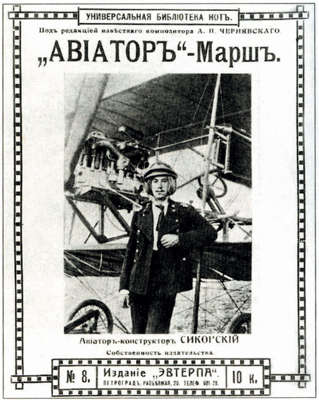
Score of the march “Aviator” dedicated to Sikorsky
In the spring of 1926, a special client came to Sikorsky – the hero of France, pilot Rene Fonck. He decided to fly over the ocean, and he needs a plane that will not pump up. Igor devoted all his time to this ambitious project. The customer was not an easy one: he constantly rushed Sikorsky, as he wanted to fly in the fall. The designer insisted on the full scope of tests and proposed to postpone the flight until the summer. Fonck was adamant.
The flight was scheduled for September 20, 1926. Cars with spectators began to arrive at the airfield long before dawn. When Fonck and the co-pilot, radio operator and mechanic who were flying with him appeared at the airfield, they were greeted by hundreds of people.
The plane with the cameraman was also ready to capture the beginning of the historical event. Someone from the crowd loudly turned to the radio operator: “Mister, do you have enough money for Parisian entertainment?” Waiting for the laughter to subside, he replied with a smile: “To visit paradise, a dollar is enough.” The team took their seats, Fonck started the engines.
The plane is accelerating. Suddenly, its speed drops, a plume of dust stretches behind it, the wheels of the landing gear fly off, the tail strut breaks off. A giant car falls into a ravine from a six-meter height and immediately ignites. Fonck and the co-pilot manage to get out of the car, the mechanic and the radio operator are burned to death.
The next morning, photographs of the disaster are made in American newspapers, and the footage is shown in cinemas for a long time before the screenings. Six months later, Sikorsky is still in debt due to an uninsured plane and lost trust. And in May 1927, a little-known young pilot, Charles Lindbergh, makes the first ever transatlantic flight on a battered single-engine plane.
Amphibious aircraft
And again Sikorsky demonstrates the miracles of stress resistance. He borrows money and moves the plant closer to the water. The designer seeks to create an amphibious aircraft that is distinguished by its capacity and capable of covering long distances. The first amphibian was ready in the same year 1927, the official customer was the largest US aviation company Pan American.
The aircraft's technical advisor, Charles Lindbergh, was supposed to receive the amphibian. Despite the fact that Lindbergh indirectly wiped the designer's nose with his flight across the ocean, they immediately became friends. Lindbergh approved the amphibian. During a demonstration flight for the press, Sikorsky left the cockpit and descended into the passenger compartment. It was already evening, and at the moment when he opened the door, the light in the salon turned on. The designer froze in place with amazement: he saw a dream from his childhood. Small windows, walnut doors, lamps illuminating the salon with a pale blue light – a room floating in the clouds.
For the next ten years, Sikorsky's seaplanes enjoyed immense popularity, glorifying and enriching their creator. Amphibious aircraft have flown in the Caribbean, operated in Africa and even crossed the ocean, gaining a reputation for being the safest and most comfortable transport in the world.
Nevertheless, interest in amphibians gradually began to fall: they could not compete with the faster and more maneuverable “land” aircraft.
Sikorsky is fifty years old. He has already made a name for himself and amassed a fortune. You can fully devote yourself to, say, communicating with four sons, especially since the designer loved children and spent all his free time with them. In addition, recently the daughter Tatiana gave birth to the designer's first grandson! But instead of retiring, Sikorsky once again proves that he is Sikorsky.
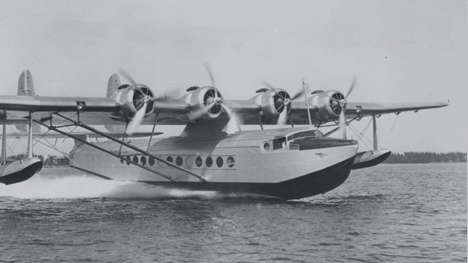
photo: The amphibious plane lands on the water
Mister Helicopter
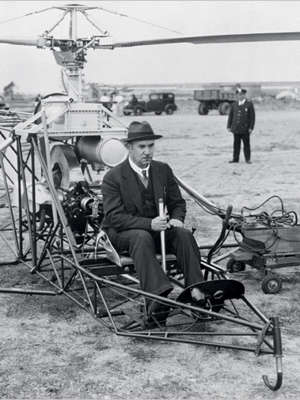
The idea to construct a helicopter never left Sikorsky. Now he approached her thoroughly. Together with his friend Lindberg, the designer visited Nazi Germany in 1938. And if Lindbergh and his wife were more interested in Hitler, then Sikorsky, bowing to the Fuhrer from afar, rushed to the workshop of the German designer Focke, who had achieved great success in helicopter construction.
Having praised the German helicopter with a transverse scheme, Sikorsky returned to the United States with the firm conviction that the transverse scheme is garbage, it is necessary to build a single-rotor helicopter. Many did not believe in the possibility of creating a helicopter. But the main thing was that the US Congress believed, which allocated Sikorsky three million dollars for the creation of a serial helicopter.
On May 20, 1940, the first public ascent of the American experimental helicopter, which resembled rather the skeleton of a helicopter, “Vout-Sikorsky 300”, took place. The car flew beautifully to the right, left, back and even turned in place, but at the same time stubbornly did not want to fly forward. The happy designer announced that this little thing is easy to fix. Sikorsky himself piloted the helicopter, his head was crowned with his favorite Fedor's hat.
Two years after that demonstration, the world's first serial Sikorsky R-4 helicopter was produced by order of the US Army. The vehicles began to be actively operated towards the end of World War II, and helicopters were used mainly in rescue operations. It was the beginning of a new era. From now on, the surname Sikorsky became synonymous with a helicopter, as the surname Ford – a synonym for a car. Sikorsky's rotorcraft filled the entire airspace over the United States, thanks to which the designer received the nickname Mr. Helicopter.
Over the next twenty-five years, Sikorsky developed about fifty helicopters, including a two-deck helicopter, an amphibious helicopter, a flying crane, a rubberized fabric helicopter … The number of Sikorsky's prizes and awards also grew: in total he was honored eighty-nine times, with a third of the awards given to the designer by American presidents.
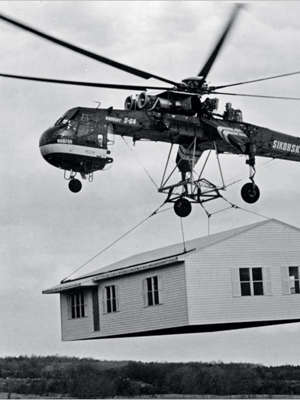
Sikorsky's vetolet in action
Sikorsky gradually began to retire. Less and less often he got into his Volkswagen Beetle to drive to the factory. But now the designer devoted more time to numerous hobbies, among which were sailing, playing the piano, writing philosophical and religious essays and shooting.
Sikorsky's favorite trick during the parties that he and his wife regularly arranged for numerous friends and acquaintances was knocking down the flame of a candle with a bullet from ten meters. The aircraft designer died in 1972 at the age of 83 – in a dream, next to his beloved wife. The Sikorsky corporation is flourishing to this day, and 99 percent of helicopters in the world are made according to the scheme proposed by the designer. Who said something about ostriches there?
Related materials:
- Plane crash with record miraculous survival
- The grandfather of Star Wars: how Tsiolkovsky, sitting in a chair, conquered the Universe
- Our Soviet Tesla! The extraordinary life of Lev Termen – inventor, millionaire, spy, prisoner and genius
- Our second everything! To Lermontov's birthday
- Iceberg aircraft carrier, nuclear tank and other titanic military equipment

